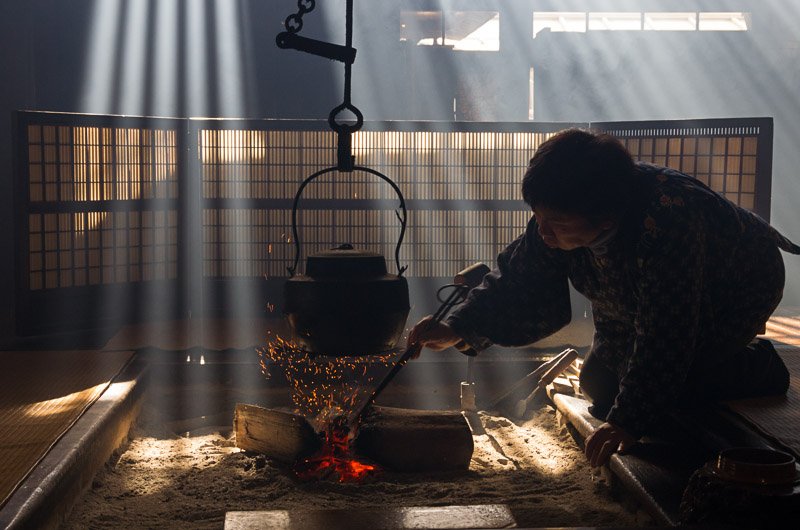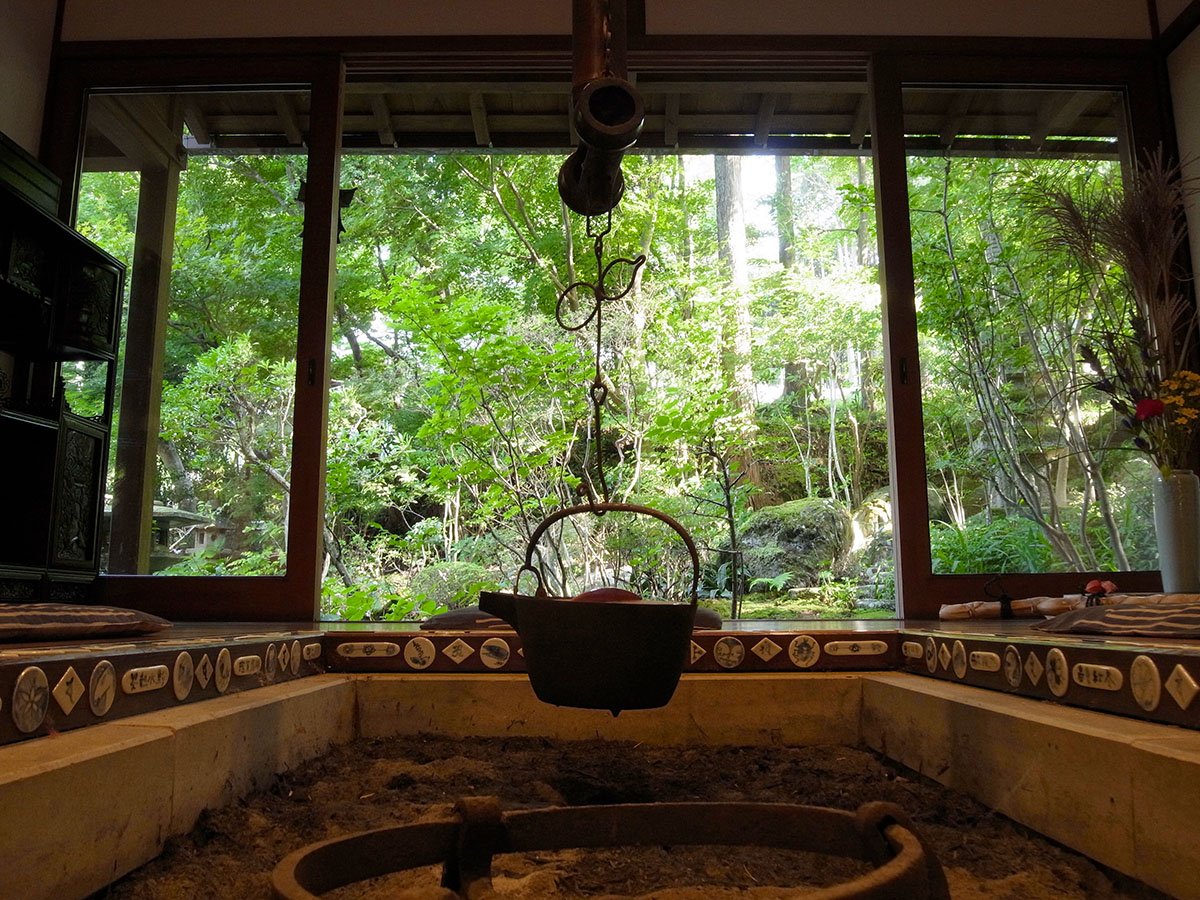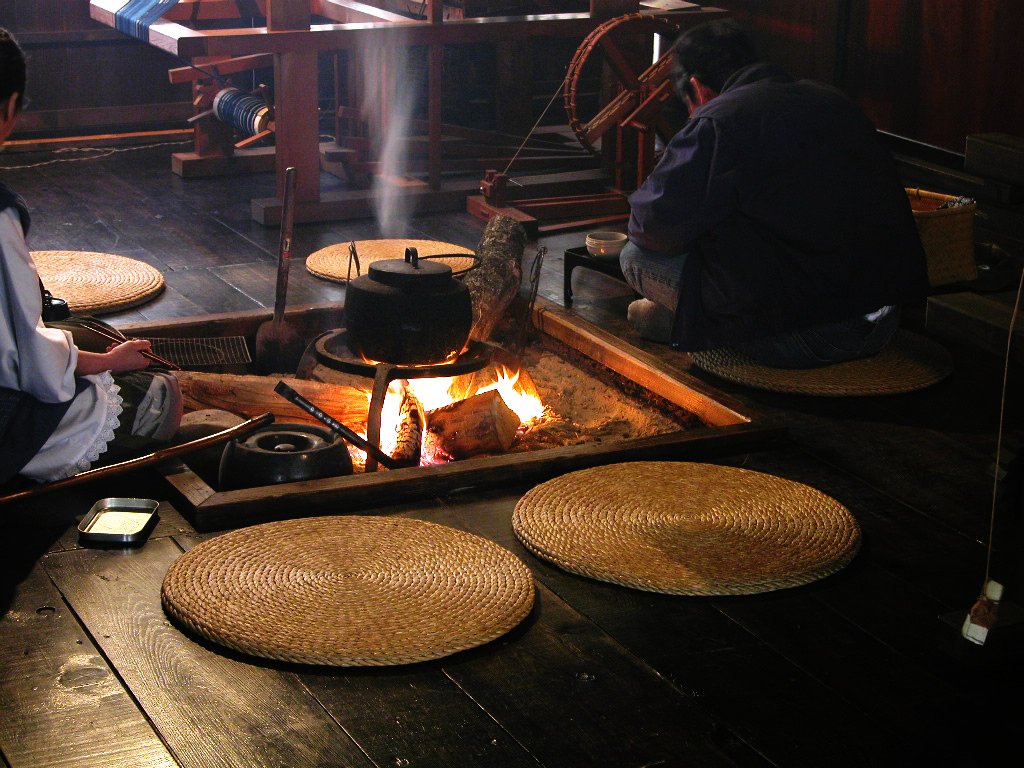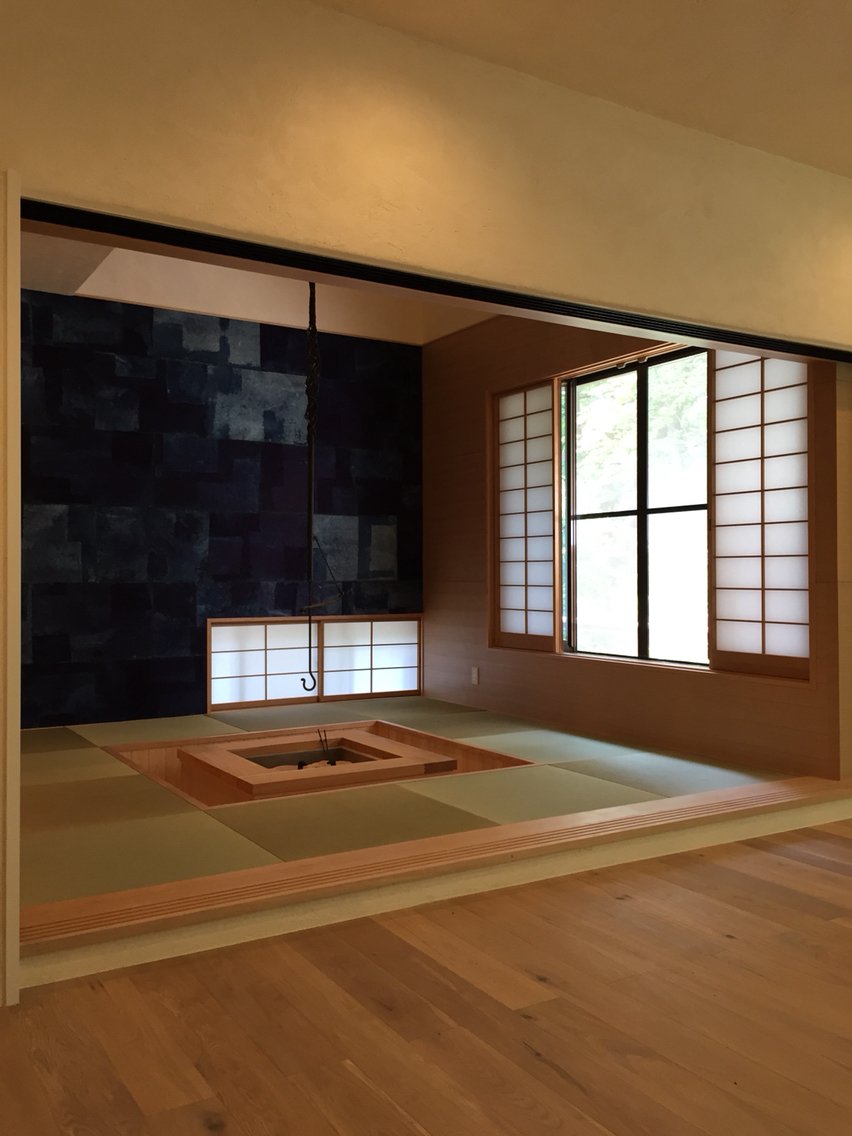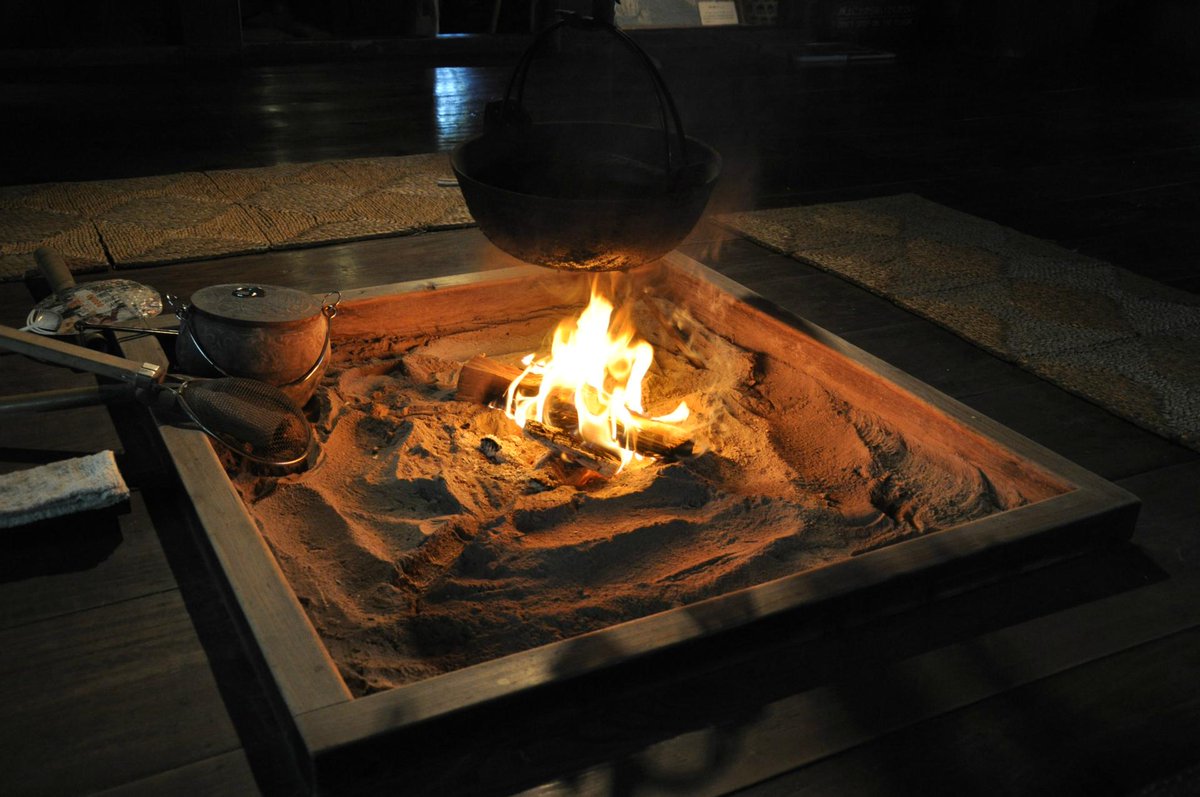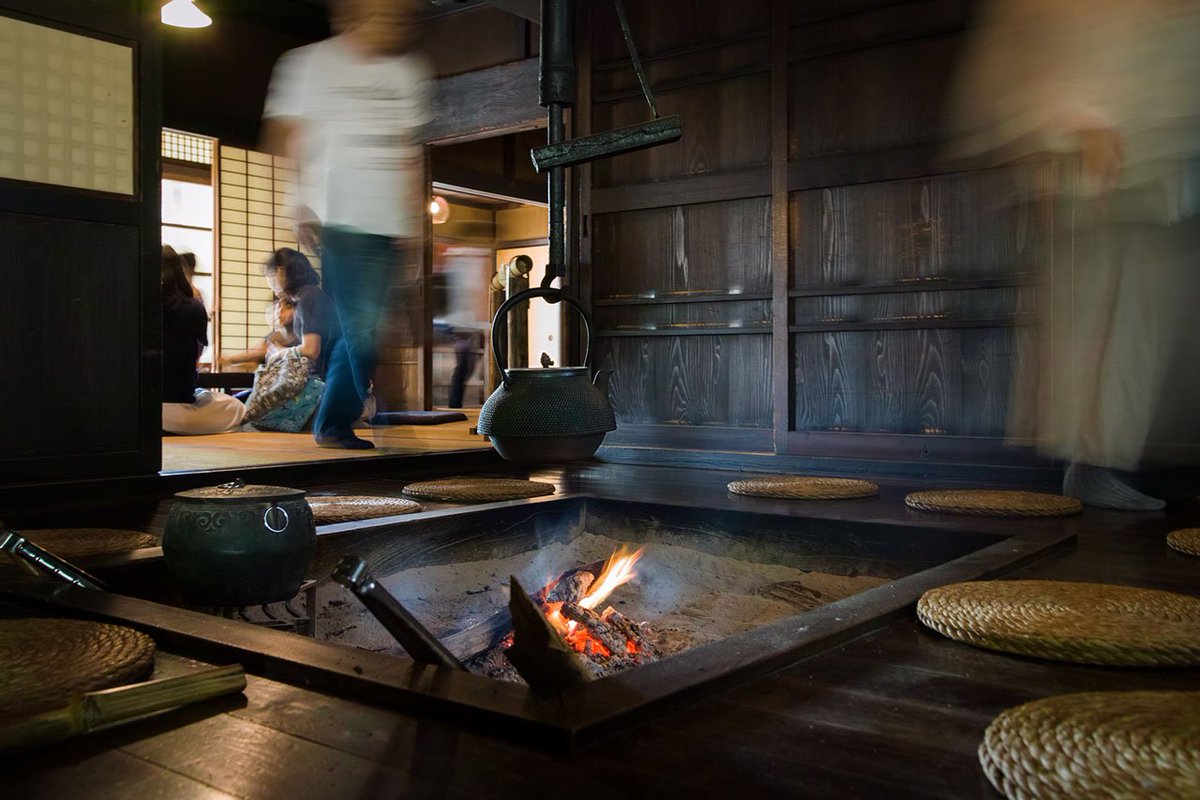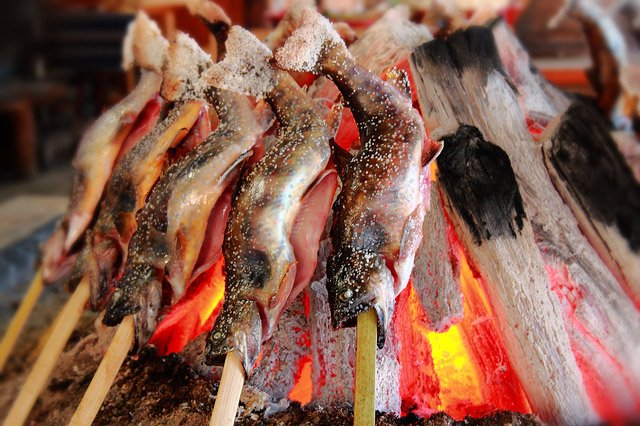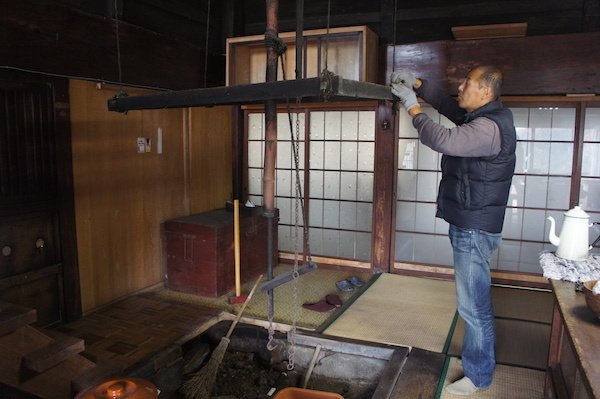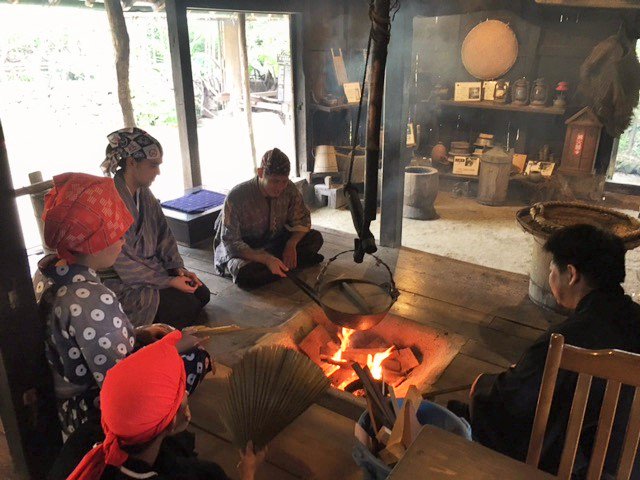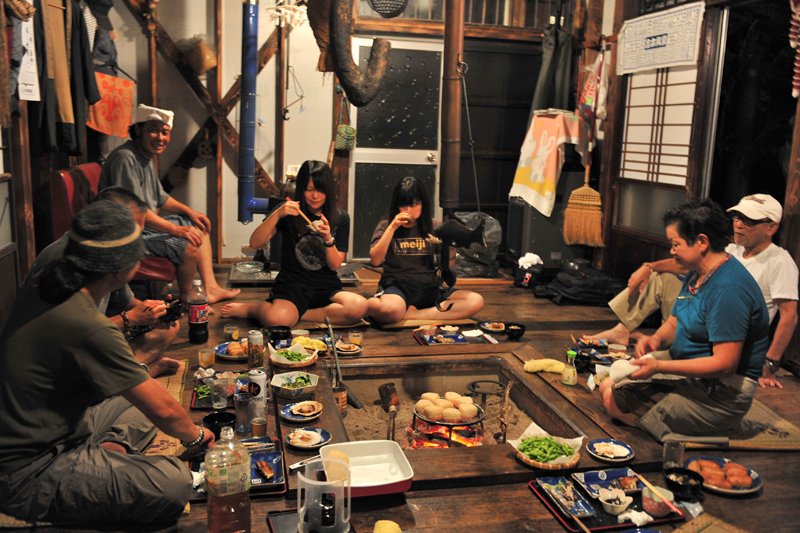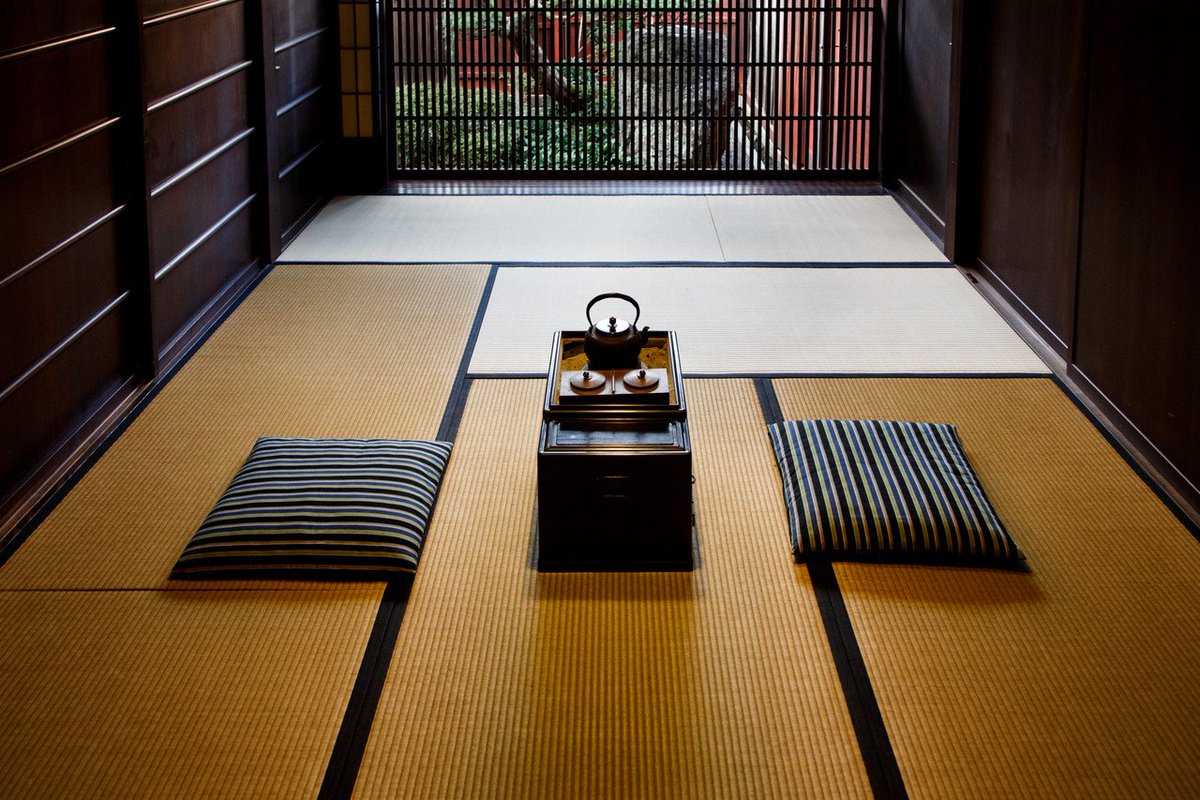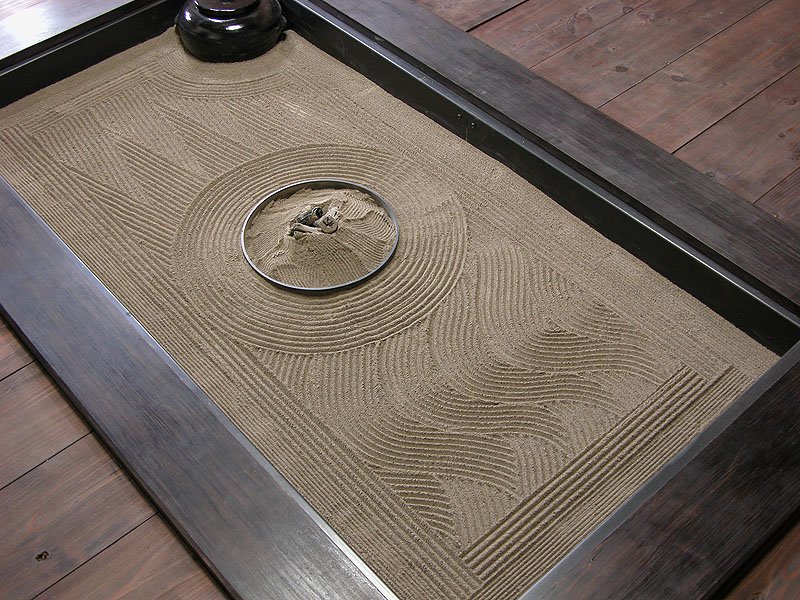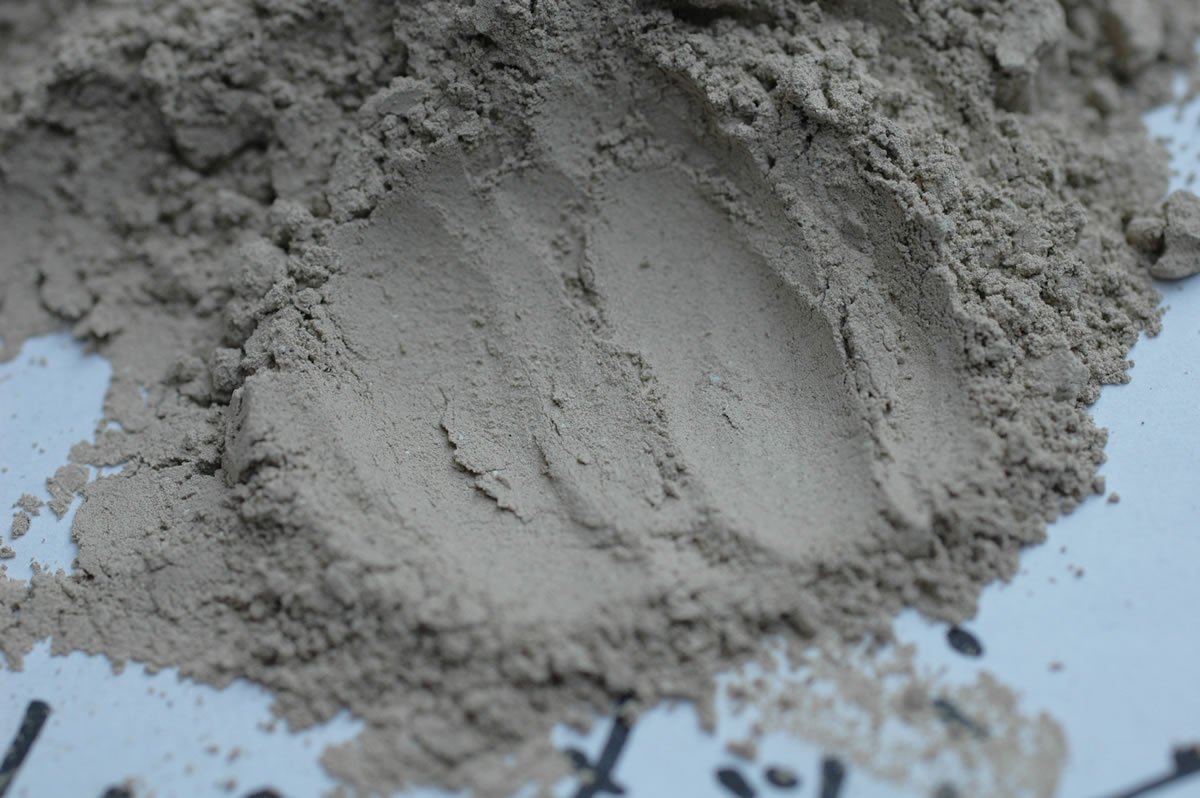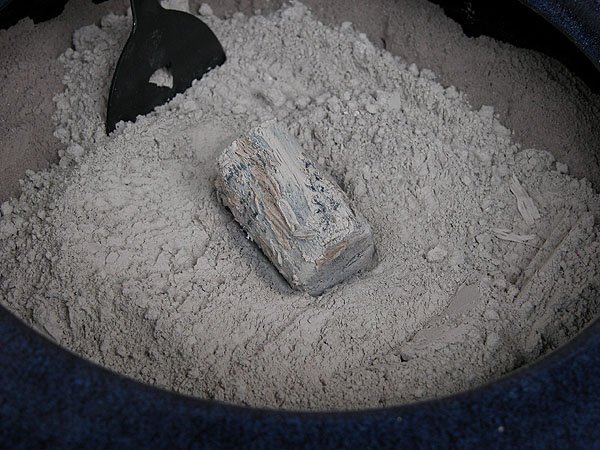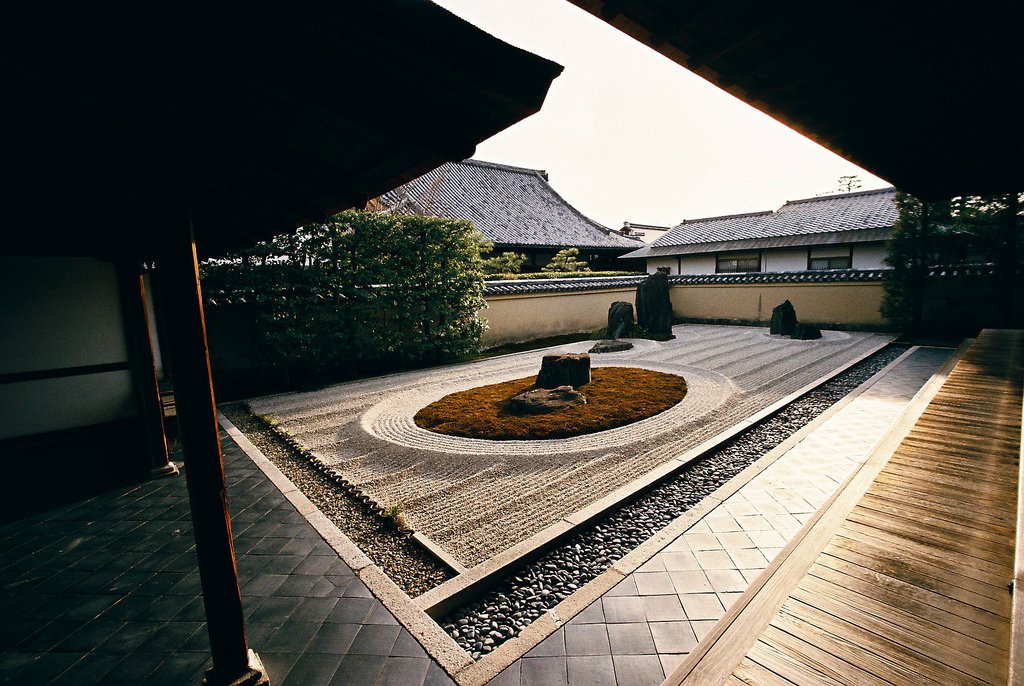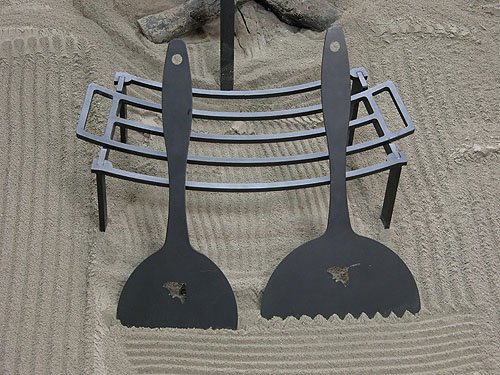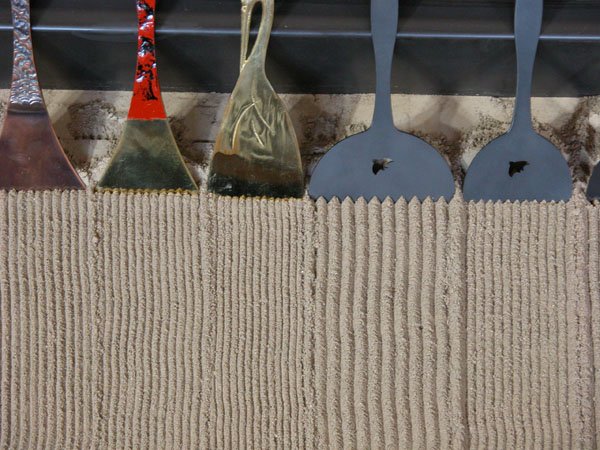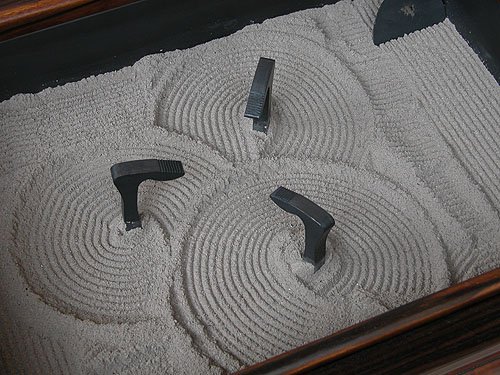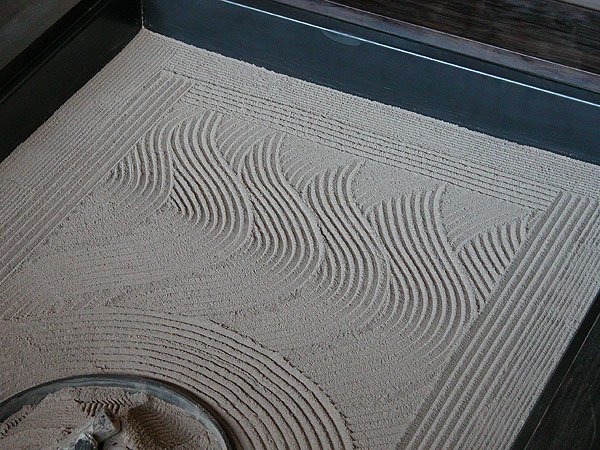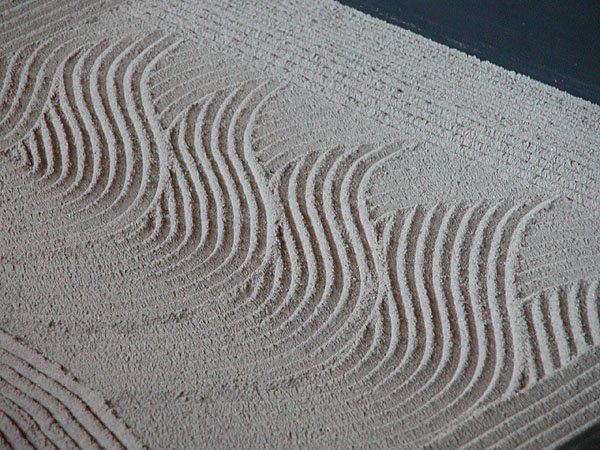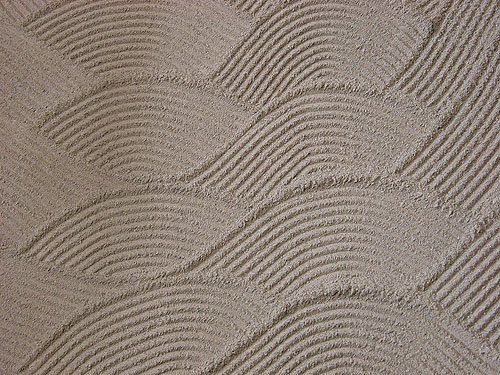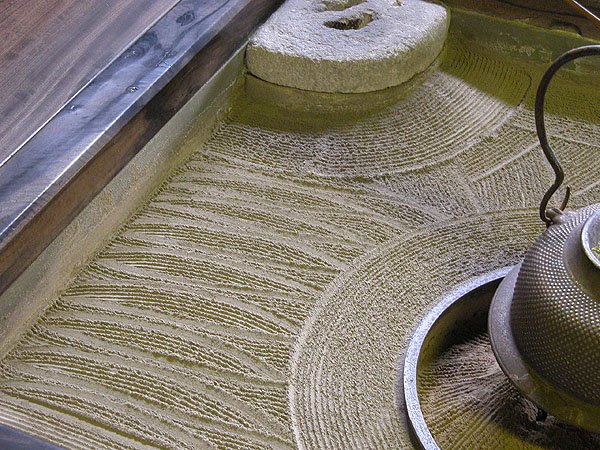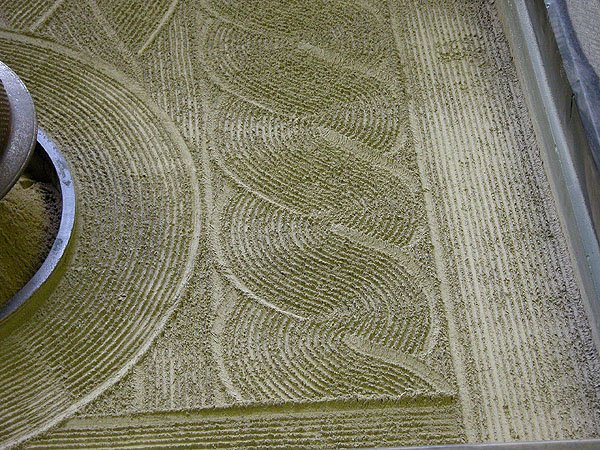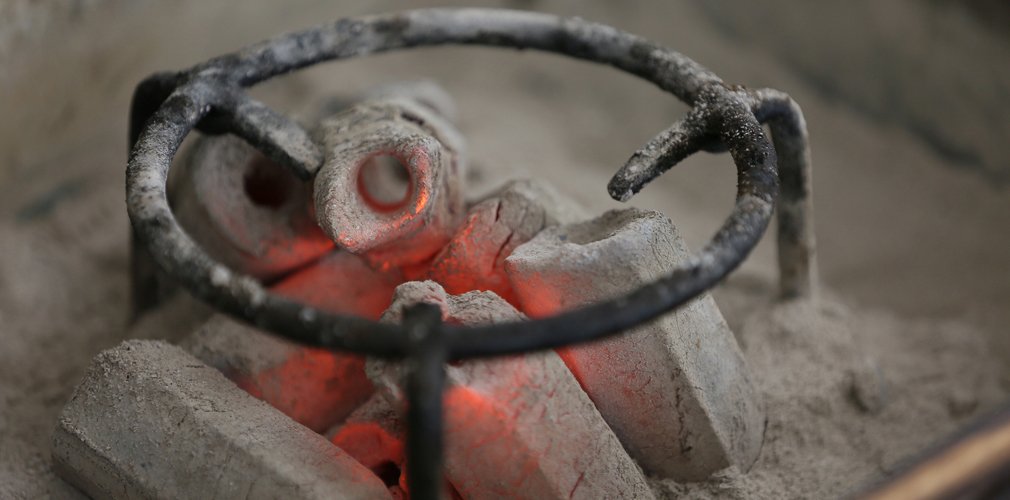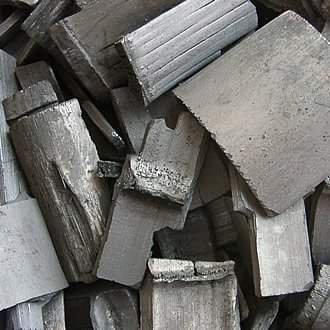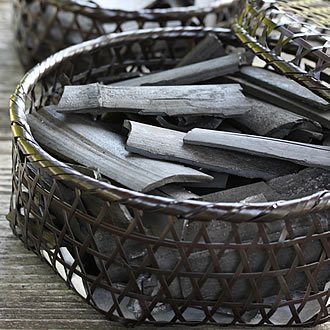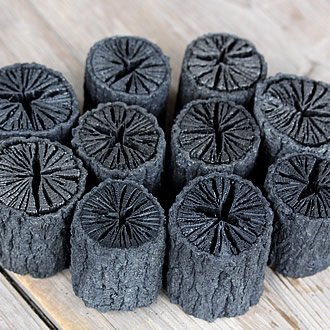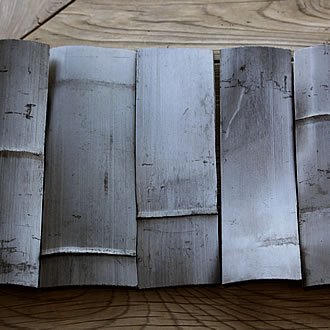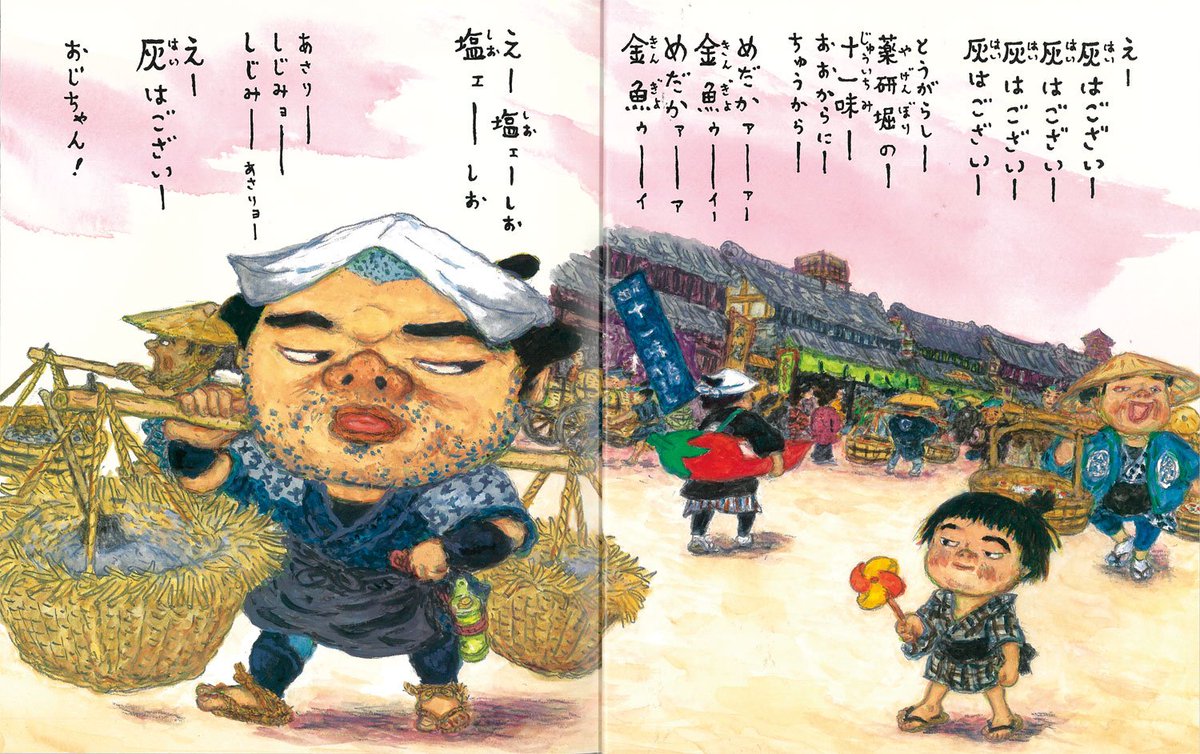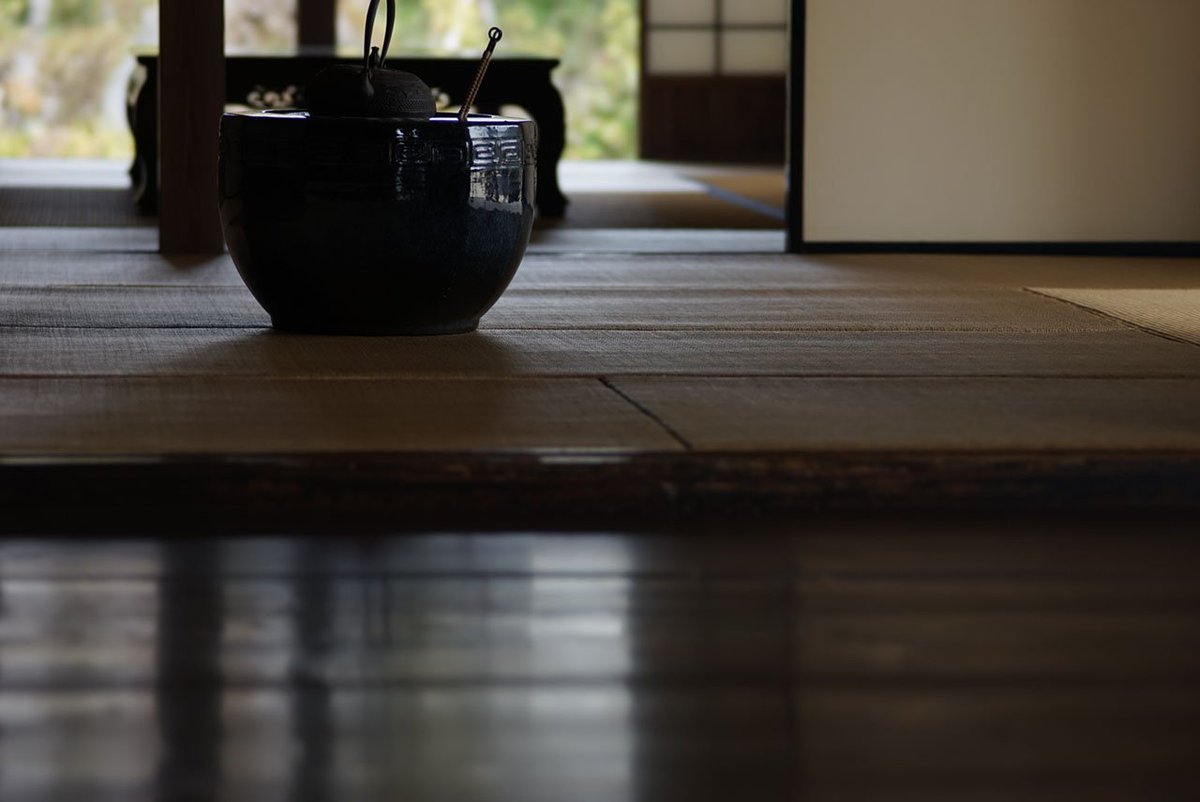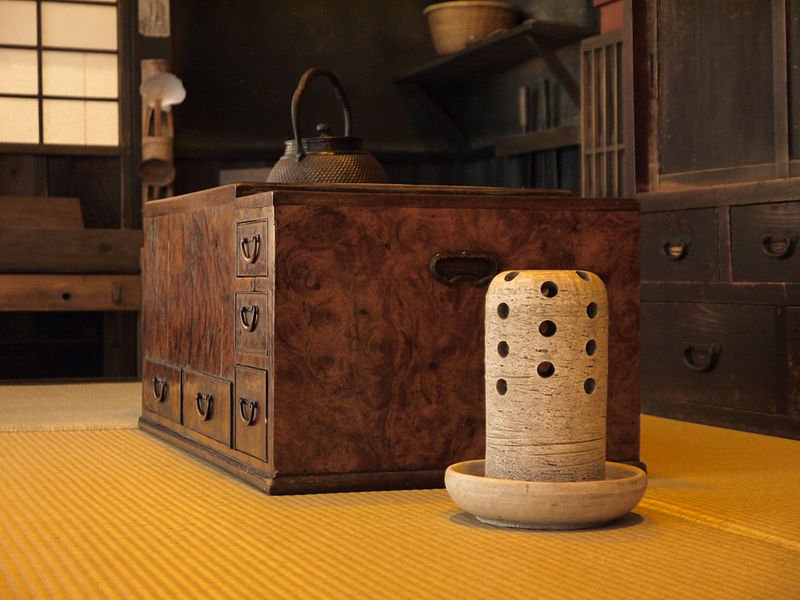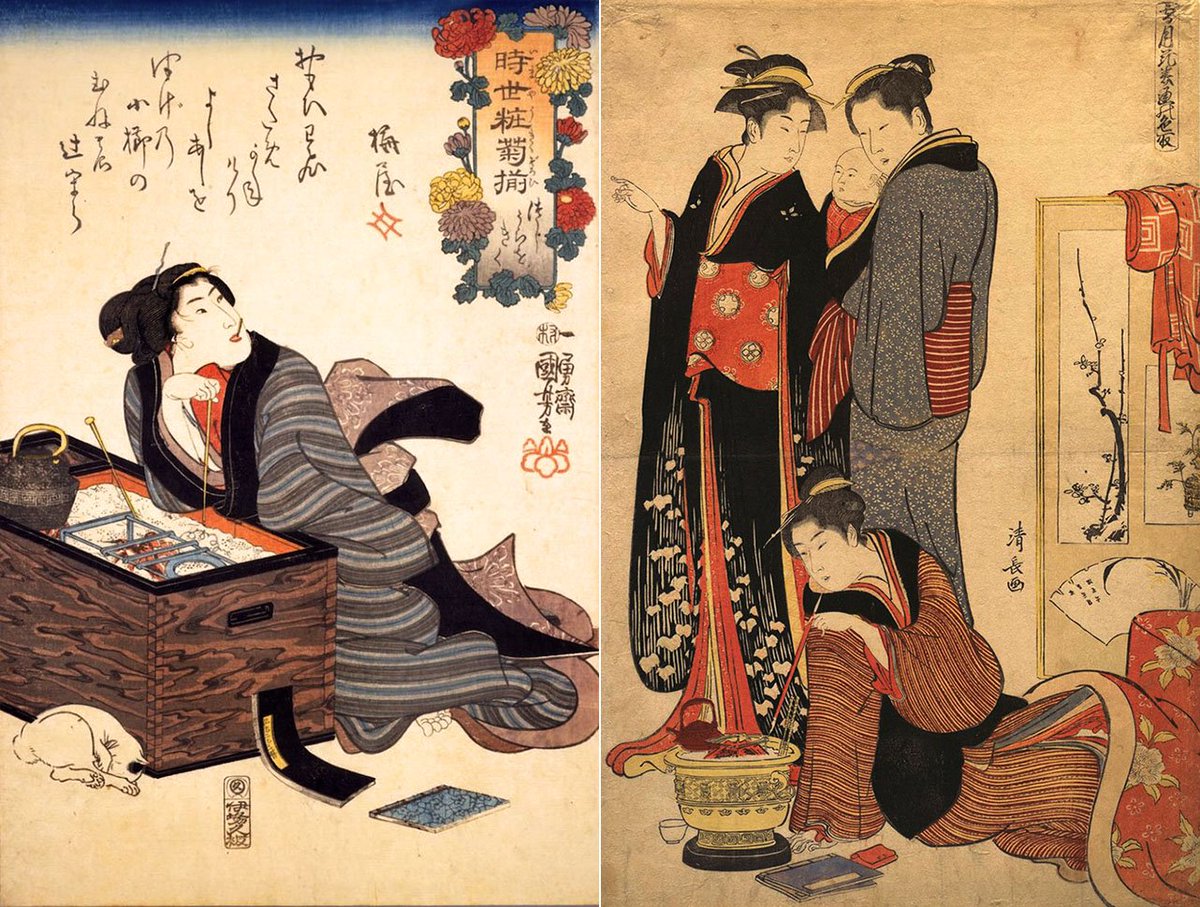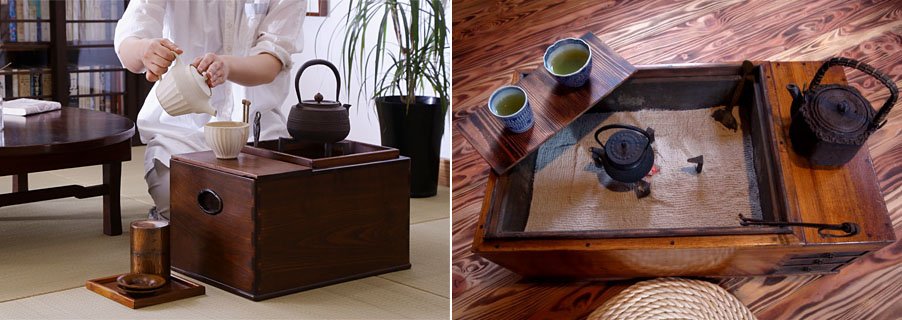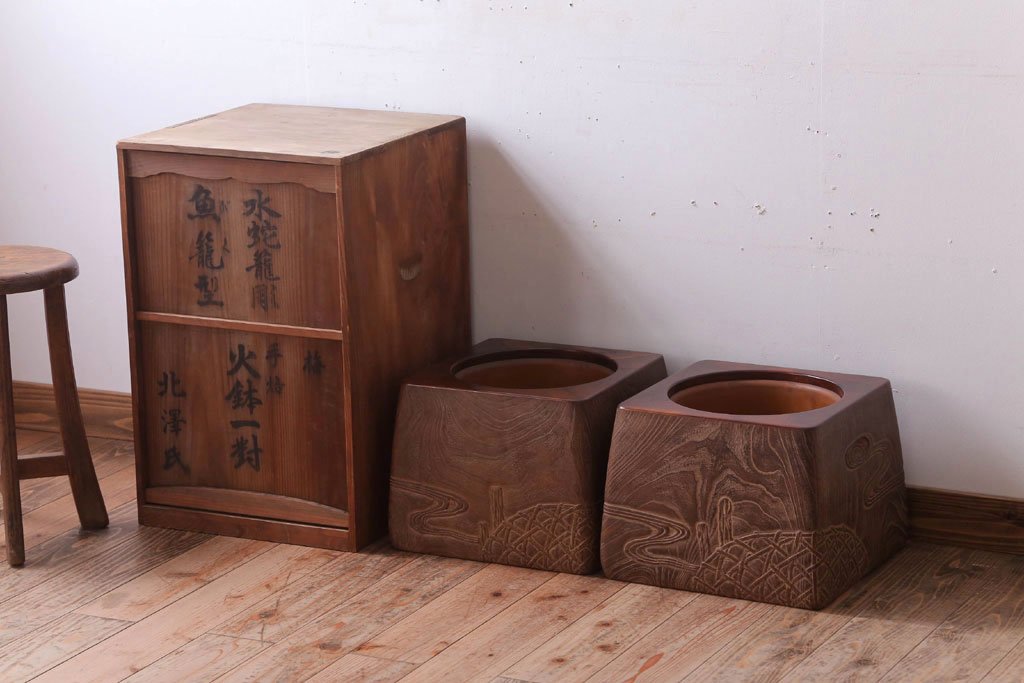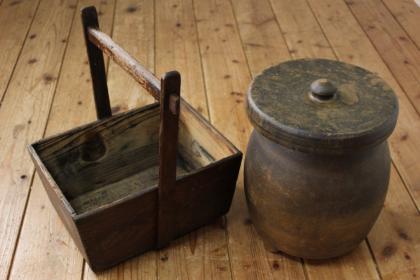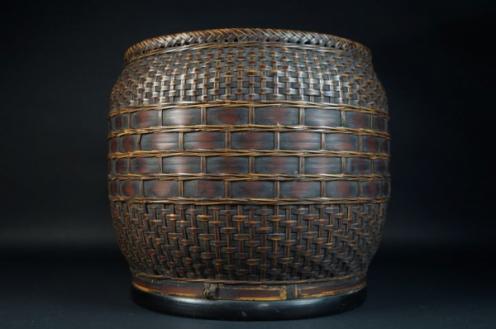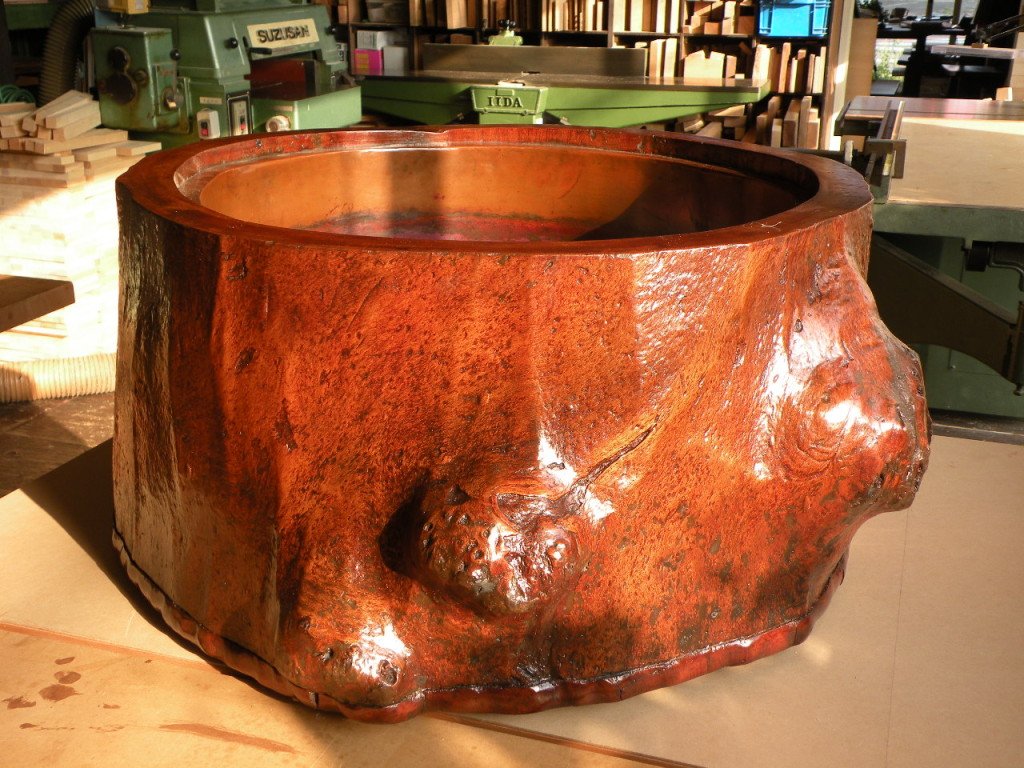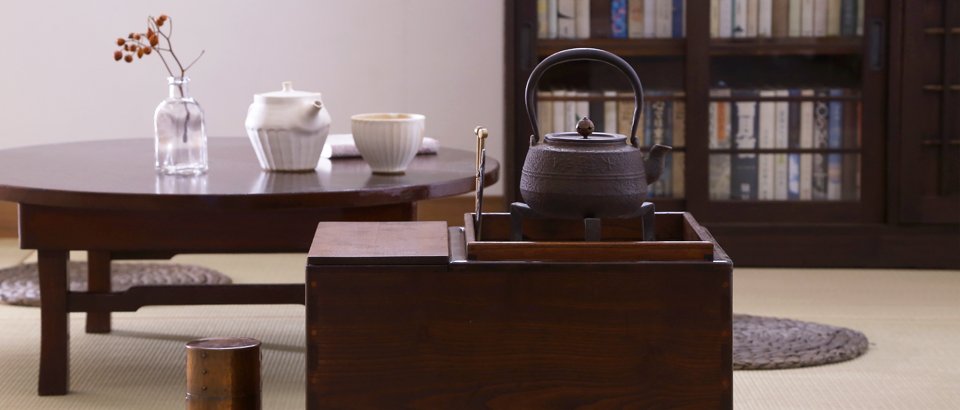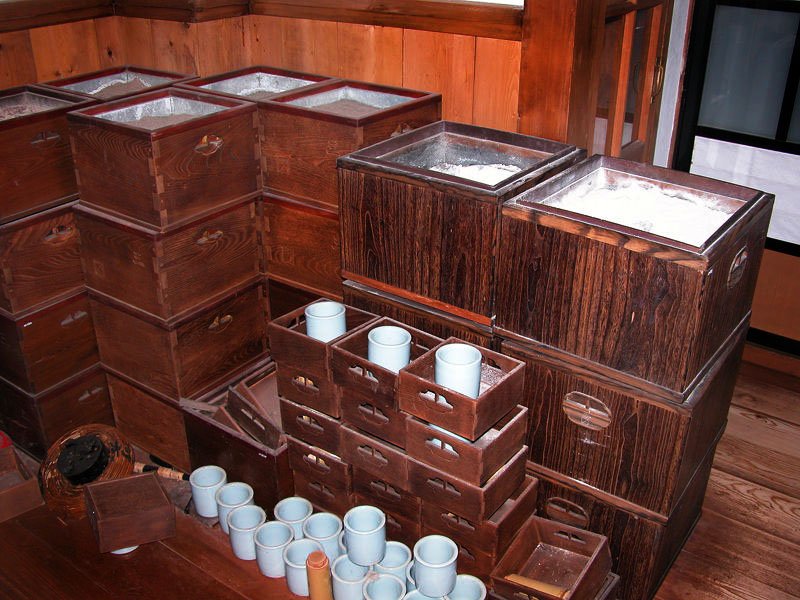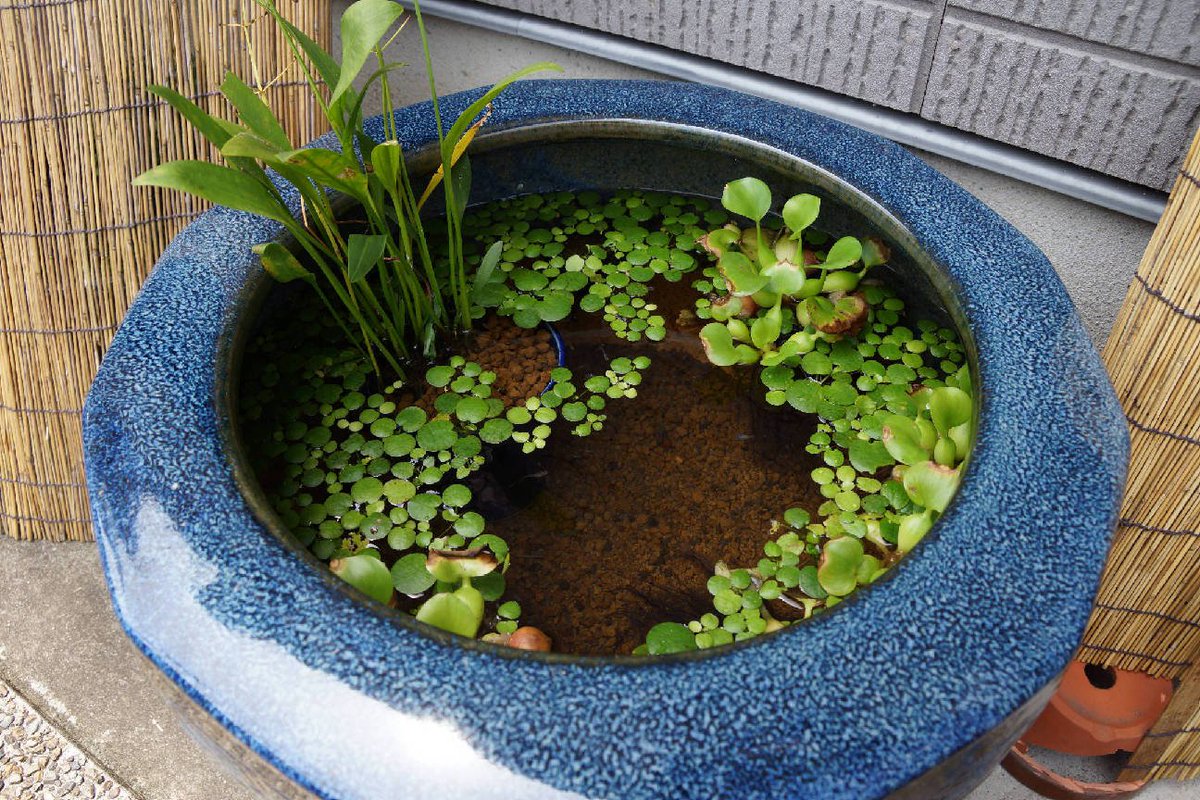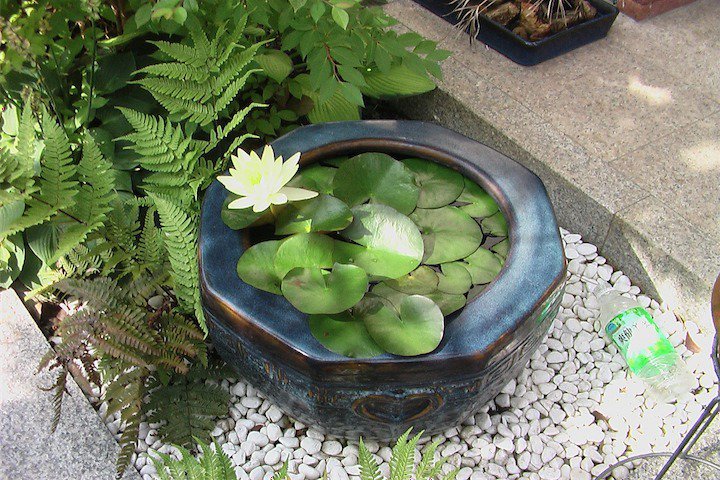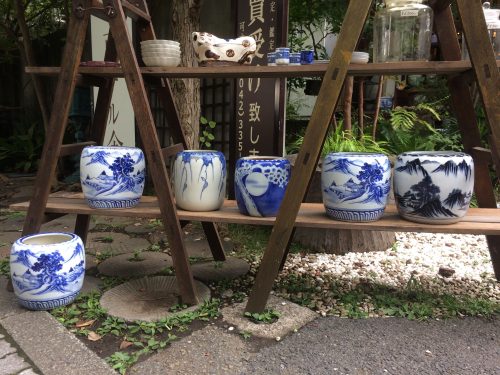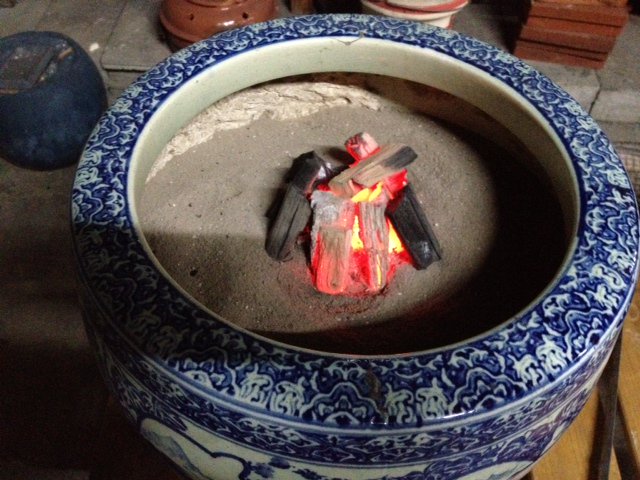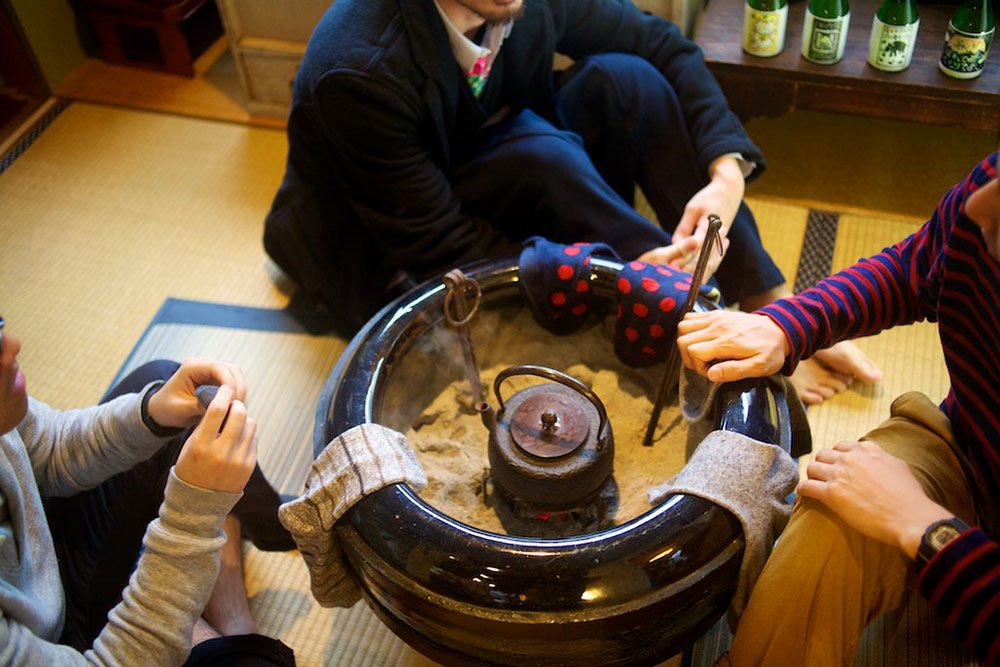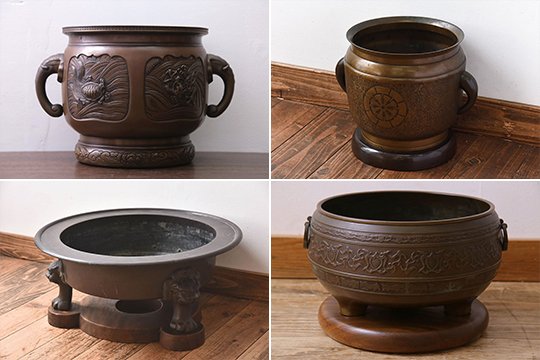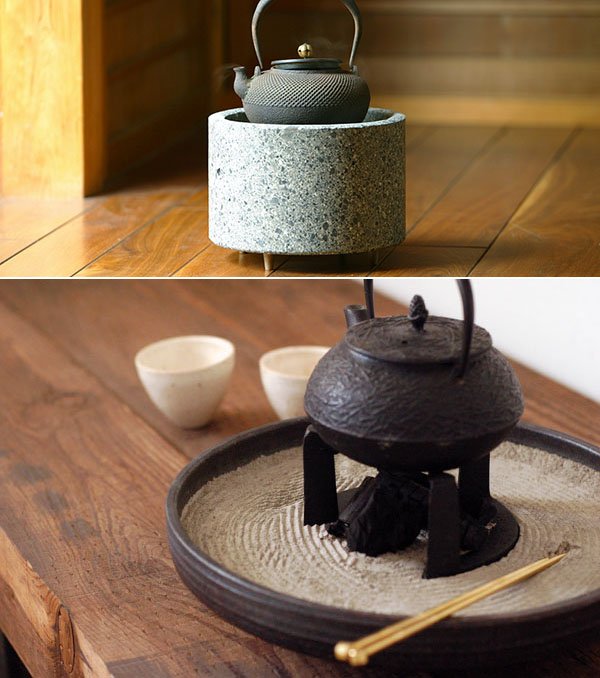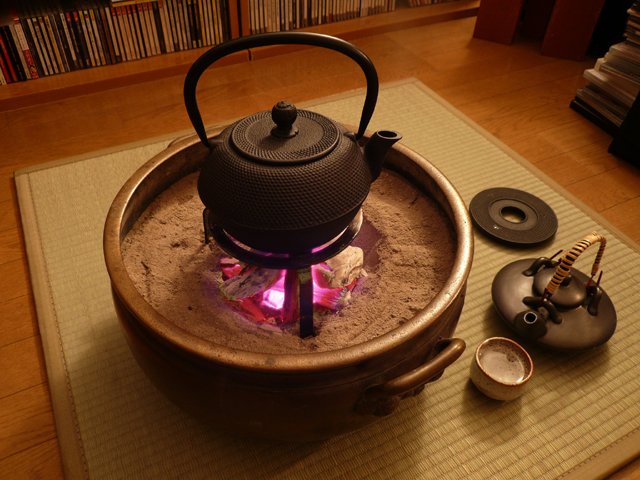In this historically cold winter, let& #39;s take a look at the two traditional ways of heating the Japanese home: the rural irori (囲炉裏) and the urban hibachi (火鉢).
Japanese homes were traditionally built with thin walls and plenty of openings to resist the subtropical summers. Extreme heat and moisture meant that insulation was never an option and still today foreigners who visit in the winter complain bitterly of the cold indoors.
Effectively heating a home constructed like this is impossible, so instead the Japanese developed the habit of heating the person: warm clothes, an active lifestyle and small, concentrated heat sources in the form of indoor hearths.
The irori, the sunken hearth, is a design so well adapted that it has hardly been improved upon over millennia, for centuries it was the sacred heart of a household, the "seat of fire." Here is a modern example.
Constructed of a wooden box (these days also metal, concrete, or brick is used) and filled with fine wood ash, the rural irori was fed either twigs, logs, or charcoal, depending on the size of the household and the use of the fire.
Surrounding the irori would be wooden boards, to protect the floor from embers and provide a convenient place for dishes and household items. The harder the wood the better, with persimmon and zelkova considered the best.
Open fires were ideal for boiling water or soups in kettles suspended from the roof rafters, or on metal stands, whereas charcoal was better for heating people and grilling food.
Many homesteads raised fish, and skewered grilled fish (Ayu no shioyaki) is still a national delicacy. The irori was the perfect way to prepare it: just roll it in salt and stick it near the charcoal.
One of the rare improvements on the irori design was the hidana (fire shelf, 火棚), a mesh or board hung above the hearth to stop the heat from going straight through the roof and instead spread it into the room. The hidana could also be used to preserve food and dry wet clothes.
Today there are hundreds of slight variants on the traditional irori: sunk, raised, table versions, special designs for tea ceremony, for receiving guests, etc. Regional difference mean that you can often tell where a house is located just by looking at the irori. Here, Okinawa.
Obviously the irori was the heart of the home, where the family gathered, talked, dozed and discussed. It would be impossible to adapt to a modern Western lifestyle, where the TV is the center and comfort the only value imaginable.
Before moving on to hibachi, let& #39;s have a look at what goes into the traditional irori and hibachi, the wood ash, and the tools with which we turn it into a thing of beauty.
Traditionally, the irori would gradually fill up, over the decades, with the finest ash of the wood or charcoal used, as larger particles were gradually filtered out. Ash—far better than sand—insulates the box itself, protecting the wood and projecting the heat into the room.
It takes about 1000kg of wood to make 5kg of fine ash, so the accumulated ash would be carefully saved up, for centuries. In the rare event of a new home being built, the ash would kept, or it could be divided to create new hearths for children who set up their own households.
Naturally, people took to arranging the ashes in their hearths in pleasing patterns, often inspired by the raked sand in traditional temple gardens.
To do this a large flat comb like rake would be used, later on these developed into special tools, the hainarashi, of which there are hundreds of varieties depending on use and size (for use in hearths, for use in tea ceremony, for incense burners, etc.). Some even have sieves.
No matter how rustic, with a cultured and tasteful pattern drawn into the hearth ash any home or hostel is instantly ennobled.
The precise order to how these patterns are constructed can be very complex, passed down from generation to generation. Some people prefer to just flatten the ash, often using a plasterers tools. Being organic, even if you drop a piece of food in the ash, it& #39;s safe to eat.
Even in homes without hearths, beautiful charcoal made from wood or bamboo is often placed around the house for the purpose of air purification, especially important in our age when most things we put indoors emit toxic substances, made even worse by modern "air tight" building.
Bonus: a traditional figure in pre-modern Tokyo was the haiya, the ambulatory ash merchant. People would sell their unneeded ash to the haiya who would sell it to farmers, the ash& #39;ld help neutralize the volcanic soil, resulting in better yields. Here is a children book on haiya.
The hibachi were used everywhere in Japan but always in the cities where space was expensive and especially craftsmen, artisans, hospitality workers, needed to be able to bring the heat to where they were working. They have a long history. The king of hibachi are the nagahibachi.
Nagahibachi were objects of furniture, usually used for cooking and heating up food brought from outside. Old Edo was in many ways like ancient Rome: cooking was done outside by professionals. In Edo people would buy food on their way home from work and heat it on the hibachi.
The nagahibachi (長火鉢) had drawers for eating utensils, napkins etc. and the ones used in restaurants often had inlaid ashtrays. The space on the side of the hearth was called nekoita (猫板), cat-board, since it was usually occupied by one of the local cats or household pets.
The wood ash used to fill the hearth is perfect for insulating the hibachi, which means that any material at all could be used for the box itself, even wood, hollowed out tree stumps or bamboo baskets, as well as lacquerware or metals.
Today the nagahibachi have gone out of fashion and even antique ones that are hundreds of years old are fairly cheap and easy to find. New ones on the other hand a all hand made and costs a small fortune.
Traditionally the more expensive nagahibachi where used in larger families, at home, and the square wooden standard hibachi would have been used in restaurants and smaller homes. It was easy to stack and store so many would have owned several of these, to use when needed.
The boom time of hibachi came when round ceramic ones started to be mass produced in the 19th century. Millions of these were made and they are still extremely common all over the country, but these days for garden ornaments or for keeping medaka fish (to keep mosquitoes at bay).
Before the war virtually every family in the country would have had one of these for each room, or more.
Like the irori, the hibachi are a great way to economize precious fuel in a more or less sustainable manner: instead of heating the room, heat the person, directly, or indirectly via hot food and drink.
The hibachi made of metal were the most expensive ones, and were usually found in wealthier homes. They remain in daily use in thousands of temples all over the country.
Recently a new generation of Japanese are discovering the charm of these hibachi and you will find many that are designed to harmonize with modern homes, in terms of colors, shapes and materials. Even, concrete!

 Read on Twitter
Read on Twitter